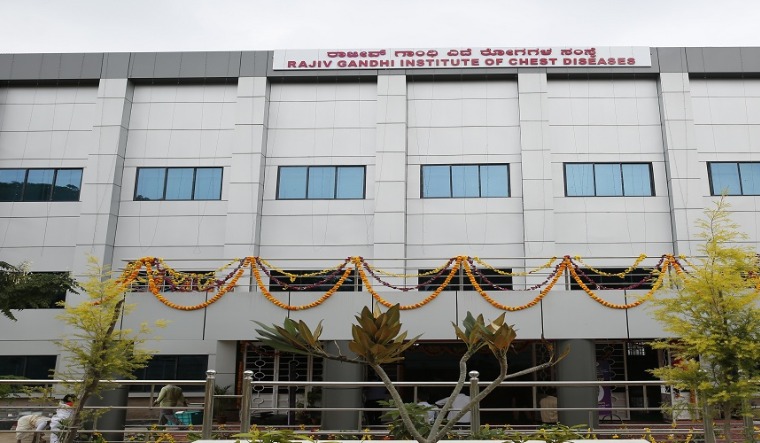The battle against COVID-19 is taking its toll not just on the designated pandemic hospitals, but on the non-COVID ones as well. The Rajiv Gandhi Institute for Chest Diseases (RGICD) in Bengaluru, which initially handled all the COVID-19 cases in the city, slipped out of the limelight after Victoria Hospital with 1,200 beds was designated as the COVID-19 hospital. However, RGICD is forced to function as a COVID-19 hospital as every full-fledged case of pneumonia, HIV, lung diseases like asthma and Severe Acute Respiratory infection (SARI) are landing in the hospital as private hospitals are refusing to admit patients.
It is a tricky situation as the patients could be COVID-19 positive. "Some hospitals are refusing treatment even to critical patients and are sending them to RGICD without a referral letter. We have had at least 110 SARI cases since March 27, of which three have tested positive for the coronavirus," says Dr Nagaraja, director of RGICD, adding that every hospital must attend to critical cases in their isolation wards to help curb spread of COVID-19 as patients hop from one hospital to another.
The RGICD, which has successfully fought off earlier epidemic outbreaks like H1N1 and MERS, has put in a system to streamline patients, to minimise the risk of cross-infections with separate entrances and dedicated staff for each wing. "Many late conversion cases and asymptomatic patients are landing here. So, we need to behave like a COVID-19 hospital. All our staff have been administered HCQ tablets as a precaution. We have a three-pronged approach to handle the unsorted flow of patients. All suspected cases (primary and secondary contacts of confirmed cases) are treated in a separate facility. The SARI cases are being treated at a 100-bed facility reserved for COVID-19 (after both Victoria and Bowring hospitals can accommodate no more patients). The low-risk general cases of lung diseases, asthma are treated in a third wing. We have three separate teams attending to each category to minimise the risk of transmission," says Dr Nagaraj.
The last COVID-19 patient was discharged on April 21. He was one of the 12 cured cases in the last 20 days. Even as the doctors are demanding for a common treatment protocol in the state, the disease management has been a learning curve, as each case is unique, confide doctors.
Like H1N1, COVID-19 too gets cured with proper isolation, diet, counselling and with minimum drugs, if the patient is healthy. For individuals with co-morbidities, we need to manage the symptoms like blood sugar level or blood pressure, say doctors. "The mild and moderate cases can recover in the natural course. We administer anti-viral and antibiotics in some cases. A balanced diet, stress management are crucial for recovery as most patients panic and develop stress-induced symptoms like unstable blood sugar levels. We roped in psychiatrists from NIMHANS for counselling," says Dr Nagaraj.



